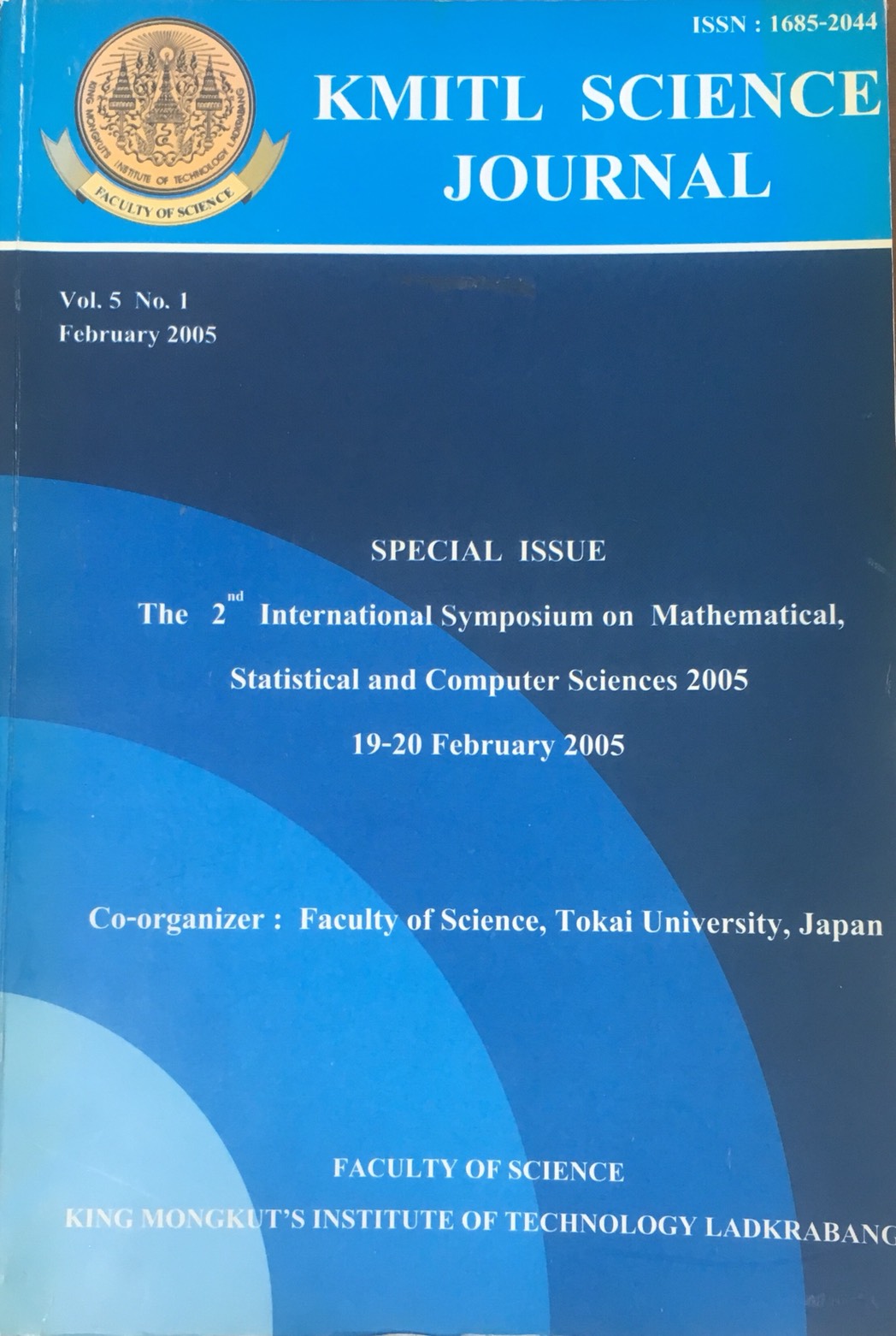Demonstration of Chromosome Representations of Genetic Algorithms for Solving Mathematical Models
Main Article Content
Abstract
This paper was aimed to demonstrate the modification on chromosome representations for solving two non-linear continuous mathematical models with single and multiple variables using binary chromosome genetic algorithms (GA). The binary chromosome was used to encode single variable and two variables models, whilst both optimum solutions from each model were initially identified. The experimental results obtained from factorial design after applying GA to solve both models, each of which with five replications, were analyzed using a general linear form of analysis of variance and main effect plots. It was found that the appropriate setting of GA parameters was case dependent due to the nature of the problems and the size of its solution space. It was also found that the random seed, which is not GA parameter but is a nuisance factor occurred during the random procedure, affected on the performance of the algorithms.
Keywords: Genetic algorithms, Design and analysis of experiment, Optimization
Corresponding author: E-mail: pupong@nu.ac.th
Article Details
Copyright Transfer Statement
The copyright of this article is transferred to Current Applied Science and Technology journal with effect if and when the article is accepted for publication. The copyright transfer covers the exclusive right to reproduce and distribute the article, including reprints, translations, photographic reproductions, electronic form (offline, online) or any other reproductions of similar nature.
The author warrants that this contribution is original and that he/she has full power to make this grant. The author signs for and accepts responsibility for releasing this material on behalf of any and all co-authors.
Here is the link for download: Copyright transfer form.pdf
References
[2] Pham, D.T. and Karaboga, D., 1998. Intelligent Optimization Techniques Genetic Algorithms, Tabu Search, Simulated Annealing and Neural Networks, Springer, London.
[3] Gen, M. and Cheng, R., 1997. Genetic algorithms and engineering design, John Wiley and Sons, New York, USA.
[4] Pongcharoen, P., Hicks, C. and Braiden, P.M., 2004. The development of genetic algorithm for the finite capacity scheduling of complex products with multiple levels of product structure, European Journal of Production Economics, 152, 215-225.
[5] Vergara, F.E., Khouja, M. and Michalewicz, M., 2002. An evolutionary algorithm for optimizing material flow in supply chains, Computers and Industrial Engineering, 43, 407-421.
[6] Zhang G.Q., Xue, J. and Lai, K. K., 2002. A class of genetic algorithms for multiple level warehouse layout problems, International Journal of Production Research, 40, 731-744.
[7] Hicks, C., 2004. A genetic algorithm tool for designing manufacturing facilities in the capital goods industry, International Journal of Production Economics, 90, 199-211.
[8] Wang, Y.Z., 2003. Using genetic algorithm methods to solve course scheduling problems, Expert Systems with Applications, 25, 39-50.
[9] De Jong, K.A., 1975. Analysis of Behavior of a Class of Genetic Adaptive Systems, Doctoral dissertation, University of Michigan, Michigan.
[10] Pongcharoen, P. and Promtet, W., 2004. Exploring and determining genetic algorithms parameters through experimental design and analysis, Proceedings 33rd International Conference on Computers and Industrial engineering, Jeju, Korea.
[11] Ayutug H, Khouja M and Vergara F.E., 2003. Use of genetic algorithms to solve production and operations management problems: a review, International Journal of Production Research, 41(17), 3955-4009.
[12] Montgomery, D.C., 1997. Design and Analysis of Experiments, John Wiley & Sons, New York, USA.
[13] Todd, D., 1997. Multiple Criteria Genetic Algorithms in Engineering Design and Operation, Ph.D. Thesis, Newcastle upon Tyne, UK.
[14] Holland, J.H., 1975. Adaptation in Natural and Artificial Systems, University of Michigan Press.
[15] Goldberg, D.E., 1989. Genetic Algorithms in Search, Optimization and Machine Learning, Addison Wesley Longman.
[16] Nearchou, A.C., 2004. The effect of various operators on the genetic search for large scheduling problems, International Journal of Production Economics, 88, 191-203.
[17] Pongcharoen P, Stewardson D.J., Hicks C. and Braiden P.M., 2001. Applying designed experiments to optimize the performance of genetic algorithms used for scheduling complex products in the capital goods industry, Journal of Applied Statistics, 28(3&4), 441-455.


